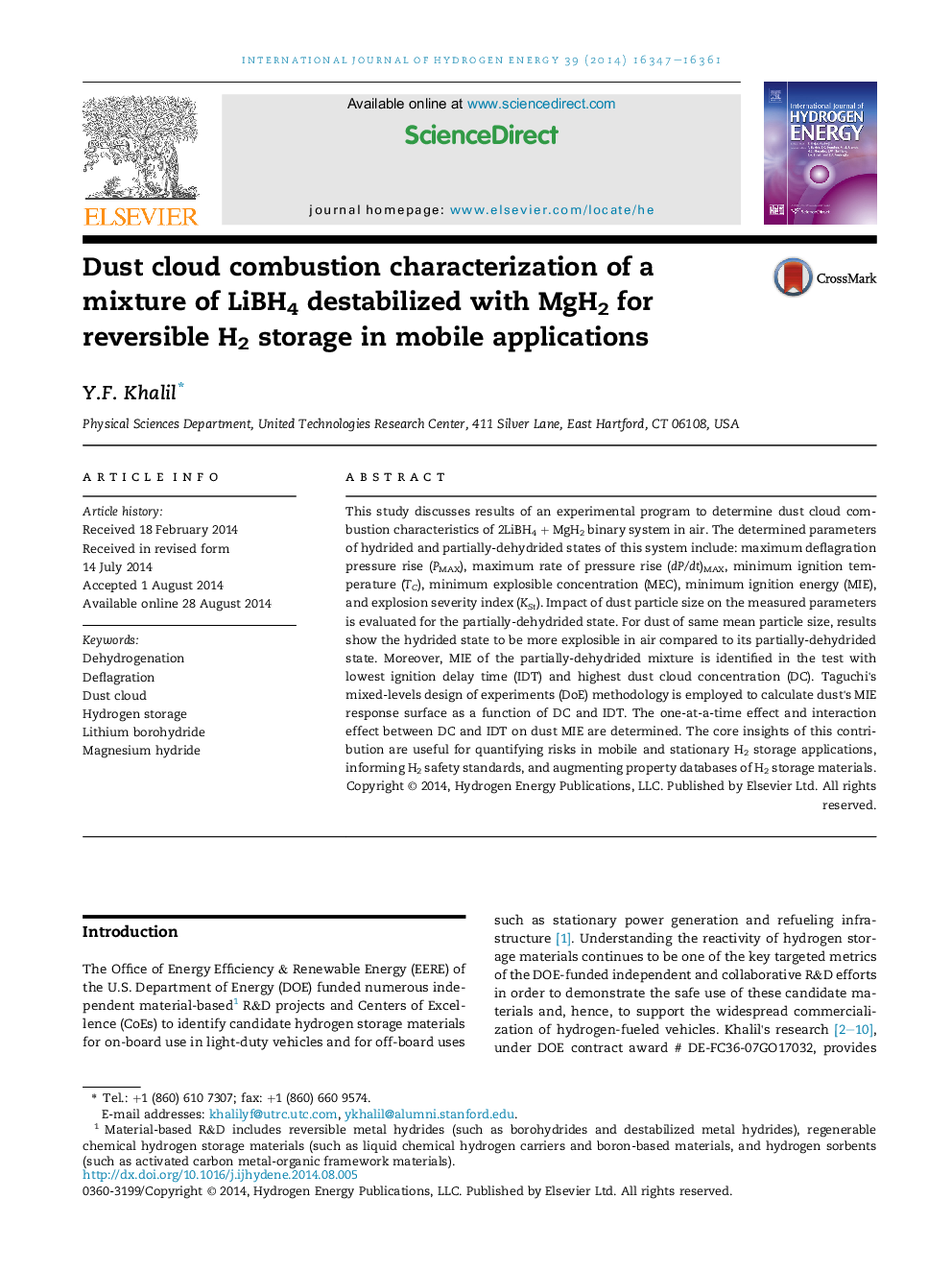| Article ID | Journal | Published Year | Pages | File Type |
|---|---|---|---|---|
| 1280973 | International Journal of Hydrogen Energy | 2014 | 15 Pages |
•Determined dust cloud deflagration parameters of a complex hydride for H2 storage.•Improved understanding of hazards associated with use of a H2 storage material.•Established new dust explosion classification information of a hydride mixture.•Established safety hazards data of significance to H2 safety codes and standards.•Quantified the explosion severity index of a complex hydride mixture.
This study discusses results of an experimental program to determine dust cloud combustion characteristics of 2LiBH4 + MgH2 binary system in air. The determined parameters of hydrided and partially-dehydrided states of this system include: maximum deflagration pressure rise (PMAX), maximum rate of pressure rise (dP/dt)MAX, minimum ignition temperature (TC), minimum explosible concentration (MEC), minimum ignition energy (MIE), and explosion severity index (KSt). Impact of dust particle size on the measured parameters is evaluated for the partially-dehydrided state. For dust of same mean particle size, results show the hydrided state to be more explosible in air compared to its partially-dehydrided state. Moreover, MIE of the partially-dehydrided mixture is identified in the test with lowest ignition delay time (IDT) and highest dust cloud concentration (DC). Taguchi's mixed-levels design of experiments (DoE) methodology is employed to calculate dust's MIE response surface as a function of DC and IDT. The one-at-a-time effect and interaction effect between DC and IDT on dust MIE are determined. The core insights of this contribution are useful for quantifying risks in mobile and stationary H2 storage applications, informing H2 safety standards, and augmenting property databases of H2 storage materials.
